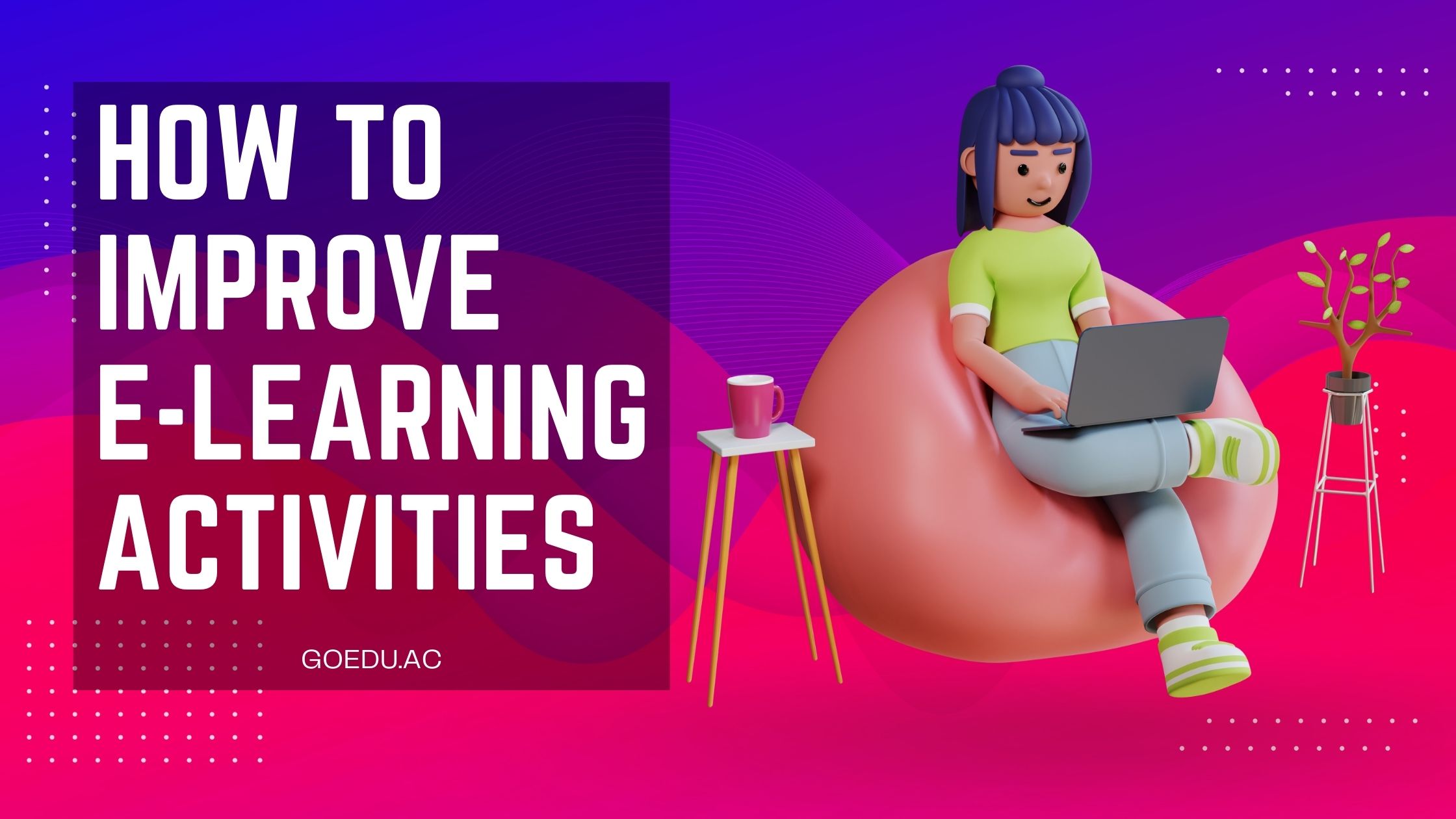
How to Improve E-learning Activities
It is quite interesting to see that e-Learning is booming in size every year! Thousands of classes, e-courses, and e-books on how-to and what-to arrive online every week. The location and accessibility of in-person lectures and workshops are limited. e-Learning opens up a whole new universe of experiences, both positive and negative, for simple access, development, and international distribution. Passionate learners now have a feast of options in front of them. It’s like having a classroom full of teachers and trainers in your living room. Yet, no sooner have you purchased one e-learning course and begun reading it, another enticement piques your interest, claiming to be even greater, even bigger. This is also crucial while one learns how to develop e-learning courses. The influx of fresh stuff never seems to stop, with most of it being poorly written.
Required skills and abilities to learn
Studying on a computer screen necessitates a variety of mental and visual skills. When we browse the Internet, we usually use a scanning approach to read. Reading will become more deliberate and careful as a result of studying. This improves comprehension, critical appraisal, and practical application of the content. Adults who have not studied for a long time may need to examine the range of abilities required to resume their studies. They’re the ones they learned in school. For some, the mere thought of returning to school makes them want to hide beneath their blankets. Those who have had less gap time since their academic days will be able to reclaim their talents much more quickly. If effective study skills have not been developed earlier, there may be some effort or frustration when learning the proper procedures and developing new habits. Work from home has also made our online dependency and requirement more relevant. It will be like making a cake from scratch rather than from a box mix for them.
How to improve e-learning activities
With the change of time and requirements, it has been crucial to improving ourselves in order to keep pace with the eLearning trends. Let’s find below some tips that will enable you to learn how to improve e-learning activities:
-
Scan and summarize the content
Examine and scan all of the information. Scanning the entire region if the material is huge, then chunking one smaller portion at a time. Read the titles, subheadings, and any diagrams or memory aids for a few more minutes. Examine the material for patterns. You will always find one or more patterns if the text is well-written. Mind-visual-understanding connections are aided by patterns. Is there a concise overview of each chapter at the end? If you answered yes, you should read this during your preview. It’s crucial to test if the new material is comfortable or uncomfortable.
-
Take notes properly
Make the most of your printer ink. Do not print the information; instead, rely on your notes and memory. Taking ink-created notes is just as vital in an e-Learning setting as it is in any other. The fact that the learning material is available online does not negate the importance of taking notes. Taking handwritten notes is an important part of converting fresh short-term information into long-term access. Take note-taking to the next level if you want a checkpoint or a measuring stick for what you’re remembering. You should first preview the information, as described below, before beginning to read and take notes. Take a break after that, come back, and type up your notes. Add information that you recall from the content or that you’ve acquired from other sources as you type. Fill up the blanks with whatever is on your mind. This is the most accurate technique to determine what you have retained and what you still need to learn. If anything in your notes doesn’t make sense, you’ll know what you need to review and restart the process from the beginning. You may also ask more detailed questions.
-
Focus main concept, not all
While previewing, pay attention to ideas and main concepts rather than words. Allow titles and headings to give direction and hints. If the author is being cute with the headers (for example, the title does not match the contents), update the headings to suit something that will aid your recall. You’ll be able to determine your reading rate, how much time you’ll need to set aside, and how much work you’ll need to put in if you read the introduction and ending lines first.
-
Keep pace with the speed
We often think that our reading speed is the same whether we’re surfing the web or doing e-learning. This is not the case. E-Learning necessitates the same level of adaptability as reading a book. The rate is determined by the reader’s ability to read, the type of information, and the presentation quality. Allow yourself to vary your pace in response to new knowledge. Let rid of the notion of comparing how long it takes to read it on paper vs online. Allow for some flexibility in your study time until you’ve figured out how to gauge the information on your own level.
-
Make sure you’re not slouching
Lowering the shoulders and neck is frequently simple. The most common cause of this is when the display is not at eye level. Muscle cramping occurs as a result of the increased strain in the neck and shoulders. You can relieve strain and cramping by tilting the screen up to a greater degree, such that the screen’s center points toward your nose.
-
Take proper protection and safety
When reading from a computer screen, take extra precautions to protect your eyes. Take periodic pauses by refocusing your eyes on a distant object. There are specific computer reading eye drops available if your eyes are irritating you. If you use bifocals, request that the beginning line be raised to facilitate computer use from your eye doctor or the lens maker. This will help prevent neck strain from the little up-and-down movement required to align the bifocal line so you can read the screen. Thank you to the doctor who informed me of this. Since then, the neck ache has been gone.
-
Ask Questions
Allow yourself to be curious when learning. Make a list of any questions that come to mind. Writing the question on the top of a blank page is a terrific way to extend or answer it. Set a timer for 7–10 minutes and jot down everything that comes to mind. Write a line or two at the end of your writing to summarize what you’ve written.
Take away
Enhance your willingness and spirit. The advantage of distance learning is that we don’t have to go to class, and I get adequate rest, even when we have a lot of work to do. Sitting in front of a screen all day exhausts your eyes and brain, and it’s also harmful. Start today and keep doing these continuously. There are some great e-learning platforms on the internet. E-learning is the method of disseminating information via electronic books, CDs, webinars, and other means. It has transformed the traditional chalk-and-board technique of imparting knowledge to students. e-Learning, on the other hand, makes giving and receiving easier, more prolific, more productive.
Video Summary
Tag:distance learning, distance learning tips, distance learning tips for students, e-learning, elearning, GoEdu, how to improve online classes, how to support e learning, Learning, learning activities, learning tips, online classes, Online Learning, online learning tips, online learning tips for students, remote learning, tips, tips for online classes, tips for remote learning, virtual learning activities
Leave A Reply
You must be logged in to post a comment.




1 Comment
Eager to learn E learning activities. Please let me know when to start & how to get enrolled.